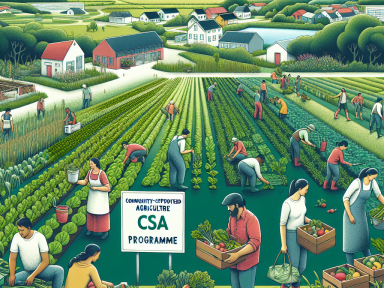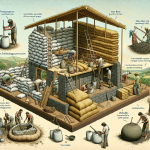Understanding Community-Supported Agriculture (CSA)
Community-Supported Agriculture (CSA) is a direct partnership model of farming that connects farmers and consumers. As we find ourselves in uncertain times, it’s more critical than ever to foster self-reliance and strengthen our food systems. Embracing CSA means bolstering our local economies and reducing our reliance on the fragile, sometimes unreliable global food supply chain.
The Importance of CSA
Imagine this: A sudden global event disrupts transportation. Grocery store shelves are emptied. We scramble to hold ourselves together, but the food simply isn’t there. A grim picture, certainly, but it’s possible. Today’s global food systems come with inherent risk — risk that each of us bears the brunt of in a crisis. Now more than ever, it’s critical to create resilient, localized food communities that can weather these kinds of storms. This is where Community-Supported Agriculture comes in.
Benefits of CSA
- Food Sovereignty: CSA empowers consumers to make food decisions independent of corporate influence. You know where your food is coming from and how it’s grown.
- Farm-to-Table Freshness: Fresh, local produce on a regular basis holds a higher nutritional value and tastes better too.
- Economic Support for Farmers: CSA provides consistent financial support for farmers. This ensures they can continue growing and contributing to local food security.
Building Your Own CSA Programme
Promoting self-reliance means taking matters into your own hands. It’s time to build a CSA programme that’s local to you. Here’s a step-by-step guide to help you begin.
Step 1: Form a Core Group
You can’t do it alone. Gather a core group of dedicated individuals committed to the cause. These could be neighbors, friends, or members of your local community. Remember, strength is in numbers.
Step 2: Connect with Local Farmers
Find local farmers who are interested in supporting a CSA. This isn’t just about financial support. It’s about building relationships with the people who grow your food.
Step 3: Organize Logistics
Plan how the food will be distributed. Will you have a pick-up point? Will volunteers deliver the packages? Work out these details based on what works best for your community.
Step 4: Promote and Find Members
Get the word out! Use social media, local newspapers, or the old school word of mouth. Ensure enough members join to make the CSA financially viable for the farmers.
Step 5: Implement and Refine
Get the program up and running. Don’t be afraid to make changes along the way. It’s a learning experience, and even bumps in the road help polish the system.
In Conclusion
A Community-Supported Agriculture program may seem like a small step, but it’s a powerful move towards self-reliance. It’s not just about having fresh vegetables on your table. It’s about building a resilient, sustainable system that protects us against the uncertainties of global supply chains. It’s about taking back control over what we eat. Our survival, our well-being, may depend on it.




GIPHY App Key not set. Please check settings